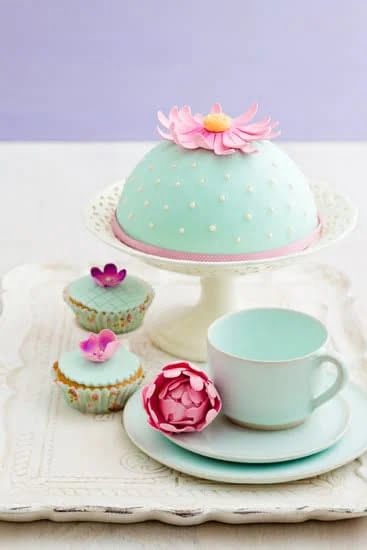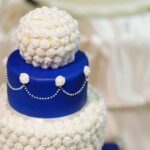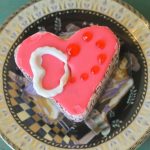When it comes to creating beautifully decorated cakes, one important tool that often gets overlooked is adhesive spray. This versatile product plays a crucial role in securely attaching fondant, decorations, and other edible elements onto cakes.
In this article, we will explore the world of adhesive spray for cake decorating, delving into its benefits, types available, step-by-step application guide, safety precautions, best practices for selection and storage, creative uses, troubleshooting common issues, as well as expert advice and recommendations.
Adhesive spray is a specially formulated product designed to provide a strong bond between different materials. In cake decorating, it serves as a reliable way to adhere fondant and various decorations onto cakes without compromising their appearance or structural integrity. Whether you’re working on an intricate design or simply looking to attach delicate elements securely, adhesive spray can make all the difference.
By using adhesive spray in cake decorating, you can achieve flawless results with ease. It ensures that your fondant won’t shift or slide off the cake while allowing you the freedom to create elaborate designs. Additionally, it provides a quick and efficient way to attach smaller details such as flowers or sugar figurines without the need for messy glues or other time-consuming methods.
In the upcoming sections of this article, we will explore the benefits of using adhesive spray in cake decorating in more detail. We will also discuss the different types available in the market, offer a step-by-step guide on its proper application techniques and suggest safety precautions to follow when handling adhesive spray. With this comprehensive overview at your fingertips, you’ll be equipped with all the knowledge necessary to enhance your cake designs using this invaluable tool.
Benefits of using adhesive spray in cake decorating
Using adhesive spray in cake decorating offers several benefits, as it helps to securely attach fondant, decorations, and other edible elements to cakes. The spray acts as a bonding agent that ensures the longevity and stability of these elements on the cake surface.
Secure attachment of fondant
Fondant is a popular choice for covering cakes due to its smooth finish and versatility for creating intricate designs. However, it can be challenging to make sure that the fondant adheres firmly to the cake. Adhesive spray solves this problem by providing a strong bond between the cake and the fondant, preventing any sagging or sliding during transportation or display.
Reliable fixation of decorations
Cake decorators often use various decorative elements to enhance the visual appeal of their creations. These can include sugar flowers, edible pearls, ribbons, or even delicate wafer paper accents. Adhesive spray allows for a secure fixation of these decorations onto the cake’s surface without damaging them or compromising their aesthetic value.
Ensuring stability of edible elements
When incorporating edible elements such as macarons, cookies, or chocolate pieces into cake designs, it is crucial to ensure that they stay in place until serving time. Adhesive spray provides a reliable solution by forming a strong bond between the edible elements and the cake surface. This guarantees that these elements do not fall off or slide during transit or while being displayed at events.
In summary, using adhesive spray in cake decorating offers numerous benefits such as secure attachment of fondant, reliable fixation of decorations, and ensuring stability of edible elements. These advantages contribute to creating visually stunning cakes that retain their artistic integrity from creation until they are enjoyed by guests.
Types of adhesive spray available for cake decorating
Adhesive spray is a versatile tool in cake decorating that helps securely attach fondant, decorations, and other edible elements to cakes. There are different types of adhesive sprays available on the market, each with its own characteristics and uses. In this section, we will discuss the various options of adhesive spray for cake decorating, including both edible and non-edible varieties.
Edible adhesive sprays are specifically formulated to be safe for consumption and are made from food-grade ingredients. These sprays provide a secure bond while remaining edible, allowing for easy consumption without compromising taste or texture. Edible adhesive sprays are often used to attach delicate fondant details, such as flowers or intricate designs, to cakes. They can also be used to seal the surface of the cake before applying additional decorations.
On the other hand, non-edible adhesive sprays are not meant to be consumed and should only be used on decorations that will be removed before serving. These sprays provide a strong bond that ensures decorations remain securely attached throughout the event but may leave a residue or affect the taste if consumed. Non-edible adhesive sprays are ideal for attaching non-food items like ribbons, wires, or artificial decorations to cakes.
It is important to read product labels carefully and choose the appropriate adhesive spray based on your specific needs. Some brands offer both edible and non-edible options in their product lines, allowing decorators to have versatility in their projects. When using any type of spray adhesive, it is recommended to apply them in thin layers and wait for them to dry before attaching decorations for best results.
Types of Adhesive Spray
| Type | Description |
|---|---|
| Edible Adhesive Spray | Made from food-grade ingredients and safe for consumption; ideal for attaching delicate fondant details |
| Non-edible Adhesive Spray | Not meant to be consumed and should only be used on decorations that will be removed before serving; provides a strong bond for non-food items like ribbons or artificial decorations |
In the next section, we will provide a step-by-step guide on using adhesive spray for cake decorating, offering tips and techniques for proper application to achieve a flawless finish.
Step-by-step guide on using adhesive spray for cake decorating
Preparing the Cake and Work Area
Before applying adhesive spray to your cake, it’s important to ensure that both the cake and your work area are clean and properly prepared. Start by placing your cake on a sturdy, level surface. If needed, trim any uneven edges or apply a smooth layer of icing for an even foundation.
Next, protect your work area by covering it with parchment paper or a clean tablecloth. This will prevent any overspray from damaging your countertop or table. It’s also a good idea to have all the fondant or decorations you plan to attach ready and within reach, as adhesive spray dries quickly.
Applying the Adhesive Spray
Once your cake and work area are prepared, it’s time to apply the adhesive spray. Shake the can well before use to ensure that all ingredients are properly mixed. Hold the can about 6-8 inches away from the surface of the cake and spray in short bursts, using sweeping motions to cover the desired area.
It is important to apply adhesive spray sparingly and evenly. A light misting is usually sufficient for most applications. Avoid spraying too close or in one spot for too long, as this may cause pooling or drips on your cake.
Attaching Fondant and Decorations
After applying adhesive spray to the desired areas of your cake, it’s time to attach your fondant or decorations. Carefully place the pieces onto the sprayed surface, gently pressing down to ensure adherence. It’s crucial to work quickly but carefully at this stage because once the adhesive spray dries, it becomes increasingly difficult to reposition items without causing damage.
If you need to reattach a piece after the adhesive has dried, simply add a small amount of fresh adhesive spray directly onto that area and press firmly until secure again.
Remember that patience is key when using adhesive spray. Allow ample time for the adhesive to fully dry and set before handling or transporting your decorated cake. This will help ensure a flawless finish and prevent any accidental smudging or damage.
By following these step-by-step instructions, you’ll be able to use adhesive spray effectively in your cake decorating projects, creating beautiful and long-lasting designs that are securely attached to your cakes.
Safety precautions when using adhesive spray
Safety precautions when using adhesive spray are crucial to ensure the well-being of both the cake decorator and those who consume the finished product. Adhesive sprays usually contain chemicals that may be harmful if not used properly or in a well-ventilated area. Therefore, it is essential to emphasize the importance of following guidelines and taking necessary safety measures while working with these products.
First and foremost, it is recommended to always read and carefully follow the instructions provided by the manufacturer of the adhesive spray. These instructions typically include information on proper usage, application techniques, and safety precautions. It is important not to overlook or disregard any of these guidelines to minimize potential risks.
One of the most critical safety precautions when using adhesive spray is to work in a well-ventilated area. The fumes emitted by the spray can be harmful if inhaled excessively, so it is best to use it in a space with open windows or proper ventilation systems. Alternatively, working outdoors can also help prevent exposure to concentrated fumes.
Additionally, wearing appropriate personal protective equipment (PPE) such as gloves, goggles, and a face mask can provide an extra layer of protection. These safety gears help prevent direct skin contact with the adhesive spray, as well as protect the eyes from potential irritation or harm caused by fumes or overspray.
Lastly, it is crucial to store adhesive spray cans properly when not in use. Keep them away from heat sources and out of reach of children or pets. Some adhesives may be flammable, so ensuring proper storage can prevent accidents or mishaps.
By following these safety precautions diligently, cake decorators can enjoy their craft while minimizing potential risks associated with using adhesive sprays.
| Important Safety Precautions When Using Adhesive Spray: |
|---|
| Read and follow instructions provided by the manufacturer |
| Work in a well-ventilated area or outdoors |
| Wear personal protective equipment (PPE) such as gloves, goggles, and a face mask |
| Store adhesive spray cans properly |
Best practices for selecting and storing adhesive spray
When it comes to selecting and storing adhesive spray for cake decorating, there are a few best practices to keep in mind. Choosing the right product is essential to achieve optimal results, while proper storage ensures its longevity. Here are some guidelines to follow:
- Consider the type of adhesive spray: There are various types of adhesive sprays available for cake decorating, including edible and non-edible varieties. Edible adhesive sprays are specifically formulated with food-safe ingredients, making them ideal for direct contact with edible elements such as fondant and decorations.
Non-edible adhesives may be used for attaching non-edible elements like ribbons or decorative items that won’t be consumed. Consider your specific needs when selecting an adhesive spray. - Read product labels and reviews: Before purchasing any adhesive spray, read the product labels and reviews to ensure it meets your requirements. Look for information on ingredients, toxicity levels, and suitability for different cake decorating techniques. It’s also helpful to check for any potential allergic reactions or compatibility issues with certain materials.
- Test before use: It’s always a good idea to perform a small test before using adhesive spray on your actual cake project. Take a small piece of fondant or decoration and apply a small amount of the adhesive spray to see how it adheres and if there are any color changes or effects on the surface. This will help you gauge the effectiveness of the product without risking damage to your final cake design.
When it comes to storing adhesive spray, proper care will ensure its longevity:
- Follow manufacturer’s instructions: Always follow the manufacturer’s instructions regarding storage temperature and conditions for the specific adhesive spray you’re using. Some may require refrigeration while others can be stored at room temperature.
- 2.Store in a dry place: Moisture can affect the performance of adhesive sprays, so it’s important to store them in a dry place away from direct sunlight or excessive heat.
- Keep away from children and pets: Adhesive sprays should be stored out of reach of children and pets. The aerosol cans may be tempting for them to play with, so it’s important to store them safely.
By following these best practices for selecting and storing adhesive spray, you can ensure that you have a reliable product that will last and perform well throughout your cake decorating projects.
Creative uses of adhesive spray in cake decorating
Adhesive spray is a versatile tool in cake decorating that can be used in a variety of creative ways to enhance cake designs. Here are some inspiring ideas and examples of how adhesive spray can take your cake decoration to the next level:
- Adding texture: Adhesive spray can be used to create interesting textures on cakes. By spraying a thin layer of adhesive spray on the surface of the cake, you can then apply various edible elements such as sprinkles, glitter, or even crushed cookies. The adhesive spray will help these elements stick securely to the cake, giving it a unique and textured appearance.
- Creating intricate patterns: With adhesive spray, you can easily adhere stencils or lace designs onto a cake to create intricate patterns. Simply hold the stencil or lace against the cake and spray a light mist of adhesive over it. Carefully remove the stencil or lace, and you’ll be left with a beautiful pattern on your cake.
- Attaching edible flowers: Fresh or sugar flowers are often used to decorate cakes, but sometimes they can fall off or become dislodged during transportation or display. Using adhesive spray can provide a secure attachment for these delicate decorations. Spray a thin layer of edible adhesive spray onto the back of each flower before placing it onto the cake. This will ensure that your flowers stay in place throughout your event.
- Applying edible images: Edible images are increasingly popular in cake decorating as they allow for customized designs and vibrant colors. To ensure that these images stick firmly to your cake without any wrinkles or air bubbles, lightly mist the surface of the cake with adhesive spray before applying the image.
Remember, when using adhesive spray in creative ways for cake decorating, it’s important to use it sparingly and evenly without oversaturating your decorations or cake layers list on which items should be sprayed).
By exploring all the creative possibilities of using adhesive spray in cake decorating, you can elevate your designs and create visually stunning cakes that will impress any audience.
Troubleshooting common issues with adhesive spray
Cake decorating can be a fun and creative way to add a special touch to any celebration. However, there are times when using adhesive spray for cake decorating can present some challenges. In this section, we will address potential issues that may arise when using adhesive spray and provide solutions for a successful cake decorating experience.
One common issue that decorators face is overspray. When applying adhesive spray, it is important to hold the can at an appropriate distance from the cake to avoid overspraying. Overspray can result in a sticky residue on the surrounding areas of the cake, which can be difficult to clean up and may affect the overall appearance of the cake. To prevent overspray, it is recommended to start spraying from a distance and gradually move closer as needed.
Another challenge that may arise is uneven application. Cake decorators strive for a flawless finish when attaching fondant or decorations using adhesive spray, but sometimes it can be difficult to achieve an even layer of adhesive on the surface of the cake. One solution to this problem is to use a brush or sponge applicator in addition to spraying. This allows for better control over where the adhesive is applied and ensures an even coverage on the cake.
Additionally, some decorators may experience issues with adhesion when using certain types of adhesive sprays. Not all adhesive sprays are created equal, and some may have stronger bonding properties than others. If you find that your decorations are not sticking securely to the cake, it may be worth experimenting with different brands or types of adhesive sprays. It is also important to allow sufficient drying time for the adhesive spray before attaching any decorations.
By troubleshooting these common issues, you can overcome challenges that may arise when using adhesive spray for cake decorating and achieve professional-looking results. Remember to experiment with different techniques and products until you find what works best for you. With patience and persistence, you will enhance your cake designs with confidence and creativity.
Expert advice and recommendations
When it comes to cake decorating, professional cake decorators have valuable insights and recommendations on the use of adhesive spray. These experts have tried and tested various products and techniques, allowing them to provide valuable guidance for beginners or those looking to enhance their skills. Here’s what professional cake decorators recommend when it comes to adhesive spray for cake decorating.
- Product Recommendations: One product that consistently receives high praise from professional cake decorators is the edible adhesive spray. This type of adhesive spray is specially formulated for food use, ensuring that it is safe to come into contact with edible elements such as fondant or gum paste decorations. Many professionals prefer edible adhesive sprays that are clear and odorless, as they do not alter the appearance or taste of the decorated cakes.
- Technique Recommendations: When using adhesive spray, professionals recommend applying it in thin layers to achieve the best results. It is important to hold the can about 6-8 inches away from the surface of the cake to ensure an even distribution without oversaturating. Professionals also suggest spraying the adhesive onto a palette or plate first before applying it with a brush, as this allows for better control over how much adhesive is used.
- Alternative Techniques: While adhesive spray is commonly used in cake decorating, some professional cake decorators prefer alternative methods for attaching decorations. Some opt for homemade alternatives like sugar glue or royal icing, which can be made using simple ingredients like water and powdered sugar. These alternatives can provide a stronger bond but may require more drying time compared to adhesive sprays.
Professional cake decorators emphasize the importance of practicing with different products and techniques to find what works best for you and your specific needs. It’s always a good idea to experiment with small projects first before taking on larger ones to gain confidence and familiarity with adhesive sprays. With these expert recommendations in mind, you’ll be well-equipped to achieve stunning cake designs using adhesive spray.
Conclusion
In conclusion, adhesive spray is a valuable tool in the world of cake decorating, offering a secure and convenient way to attach fondant, decorations, and other edible elements to cakes. The benefits of using adhesive spray are numerous, as it ensures that your cake designs stay intact and look flawless.
By providing a step-by-step guide on how to use adhesive spray properly, this article has equipped you with the knowledge and techniques needed for successful application. It is crucial to prioritize safety when using adhesive spray, following the recommended guidelines and working in a well-ventilated area.
When selecting and storing adhesive spray, it is important to choose the right product for your needs and ensure its longevity. By considering factors such as whether you need an edible or non-edible variety, you can make an informed decision that will help you achieve the desired results.
Moreover, adhesive spray can not only enhance your cake designs but also offer creative opportunities for experimentation. From adding shimmering effects to creating textured finishes, there are endless possibilities when it comes to utilizing adhesive spray in cake decorating.
Frequently Asked Questions
What is the best edible glue for cake decorating?
The best edible glue for cake decorating is typically made using edible ingredients that are safe to consume. One commonly used edible glue is royal icing, which is a mixture of egg whites or meringue powder, powdered sugar, and water. Royal icing has a thick consistency that makes it ideal for adhering decorations like fondant shapes, flowers, or even gingerbread pieces to cakes.
Another popular option is gum paste glue, which is made by dissolving small amounts of gum paste or tylose powder into water. This creates a strong adhesive that dries quickly and securely holds various cake elements together.
What can I use as glue on a cake?
When it comes to finding alternatives as glue on a cake, there are a few options available if you prefer not to use traditional edible glues. Melted chocolate or candy melts can serve as excellent adhesives for certain decorations such as attaching chocolate shards or placing individual candies on the cake’s surface.
Buttercream frosting can also be used as an effective “glue” in certain instances, particularly when assembling stacked cakes or affixing lightweight decorations like wafer paper onto the frosting. However, keep in mind that buttercream frosting does have its limitations and may not be suitable for heavy or intricate attachments.
What do bakers use as glue?
Bakers often use different substances as glue depending on the task at hand and the desired effect they want to achieve. Apart from typical edible glues such as royal icing and gum paste glue mentioned earlier, bakers might turn to simple syrup to moisten layers of cake before applying fillings or frostings, aiding in moisture retention and preventing dryness.
Ganache can be utilized as an alternative “glue” when constructing multi-tiered cakes due to its firm yet pliable texture that provides stability between layers. Additionally, specialty adhesives such as gelatin-based glues might be used for delicate sugar work or attaching pieces like bows made out of gumpaste or fondant onto cakes.

Welcome to our cake decorating blog! My name is Destiny Flores, and I am the proud owner of a cake decorating business named Cake Karma. Our mission is to provide delicious, beautiful cakes for all occasions. We specialize in creating custom cakes that are tailored specifically to each customer’s individual needs and tastes.





